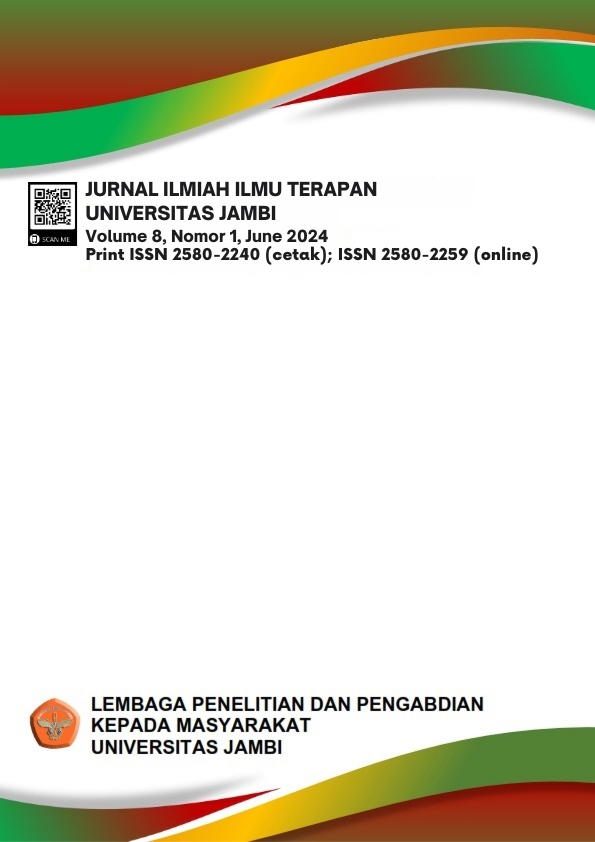THE IMPACT OF CONCEPT CARTOONS AS AN INSTRUCTIONAL MATERIAL AND FORMATIVE ASSESSMENT TOOL IN TEACHING EVOLUTION ON THE ACHIEVEMENT OF GRADE 11 STEM STUDENTS ENROLLED IN SYNCHRONOUS MODALITY
DOI:
https://doi.org/10.22437/jiituj.v8i1.32609Keywords:
Biology Education, Concept Cartoons, Evolution, Synchronous ModalityAbstract
Employing a pretest-posttest quasi-experimental design, this study ventures into uncharted territory by investigating the impact of Concept Cartoons as a pedagogical tool in teaching Evolution on the academic performance of 40 Grade 11 STEM students enrolled in General Biology 2, conducted synchronously. Furthermore, the research pioneers an exploration into students' misconceptions surrounding foundational concepts in Evolution, leveraging Concept Cartoons as a formative assessment tool deployed within an online learning platform. The cohort was divided into control (n = 21) and experimental (n = 19) groups, with the former receiving instruction through traditional lecture methods and the latter through Concept Cartoons administered digitally. Surprisingly, while students exhibited a spectrum of misconceptions related to Evolution, both experimental and control groups demonstrated statistically significant improvements in academic achievement from pre-test to post-test. Intriguingly, however, comparison of post-test scores between the experimental and control groups via independent t-test yielded no significant difference in achievement. This incongruity prompted a nuanced discussion on potential contributing factors, including the efficacy of Concept Cartoons in digital media and unforeseen technical challenges encountered during synchronous instruction. These findings offer valuable insights for science educators navigating the transition from face-to-face to online instruction amid the ongoing pandemic, underscoring the importance of critically evaluating the adaptability and effectiveness of instructional materials within diverse learning modalities.
Downloads
References
Agustian, H. Y., Finne, L. T., Jørgensen, J. T., Pedersen, M. I., Christiansen, F. V., Gammelgaard, B., & Nielsen, J. A. (2022). Learning outcomes of university chemistry teaching in laboratories: A systematic review of empirical literature. Review of Education, 10(2), 1–41. https://doi.org/10.1002/rev3.3360
Arias, J. J., Swinton, J., & Anderson, K. (2018). Online vs. face-to-face: A comparison of student outcomes with random assignment. E-Journal of Business Education and Scholarship of Teaching, 12(2), 1-23.
Blumberg, P. (2016). How critical reflection benefits faculty as they implement learner-centered teaching. New Directions for Teaching and Learning, 144, 87-97.
Brown, M. (2009). Using neuroscience to understand the role of direct mail. United Kingdom.
Teke, E., Pehlivan, M., Haceminoglu, E., & Teke, H. (2013). The effect of the science and technology course integrated with cartoonss on students achievement and attitudes. Journal of Educational and Instructional Studies, 3(2), 129-134.
Chin, C., & Teou, L. Y. (2010). Formative assessment: Using concept cartoon, pupils' drawings, and group discussions to tackle children's ideas about biological inheritance. Journal of Biological Education, 44(3), 108-115.
Clores, M. A., & Bernardo, A. B. (2007). Case studies on the interaction between students’ understanding of and belief in learning the theory of Evolution. Proceedings of the Redesigning Pedagogy: Culture, Knowledge and Understanding. Singapore.
Clores M. A., & Limjap A. (2006) Diversity of Students' Beliefs about Biological Evolution, Asia Pacific Journal of Education, 26,(1), 65-77.
Estacio, R. D. (2015). The Effect of Concept Cartoons as an Instructional Material and Formative Assessment Tool in Teaching Evolution and Diversity on the Achievement of Freshmen College Students. In Biology Education and Research in a Changing Planet (pp. 71-79). Singapore: Springer.
Fabito, B., Trillanes, A., & Sarmiento, J. (2020). Barriers and Challenges of Computing Students in an Online Learning Environment: Insights from One Private University in the Philippines. International Journal of Computing Sciences Research, 1(5), 441-458.
Kamel, O. M. (2018). Academic overload, self-efficacy and perceived social support as predictors of academic adjustment among first year university students. Psycho-Educational Research Reviews, 86-93.
Keogh, B. & Naylor, S. (1999). Concept Cartoons, teaching and learning in Science: an evaluation. International Journal of Science Education, 21(4), 431–446.
Mangen, A., Walgermo, B. R., & Brønnick, K. (2013). Reading linear texts on paper versus computer screen: Effects on reading comprehension. International journal of educational research, 58, 61-68.
Moore, D. A., & Tenney, E. R. (2012). Time pressure, performance, and productivity. In Looking back, moving forward: A review of group and team-based research. Emerald Group Publishing Limited.
Naylor, S. & Keogh, B. (2013). Concept Cartoons: What have we learnt?. Journal of Turkish Science Education, 10, 3-11.
Rasheed, R. A., Kamsin, A., & Abdullah, N. A. (2020). Challenges in the online component of blended learning: A systematic review. Computers & Education, 144, 103701.
Reyes-Chua, E., Sibbaluca, B. G., Miranda, R. D., Palmario, G. B., Moreno, R. P., & Solon, J. P. T. (2020). The status of the implementation of the e-learning classroom in selected higher education institutions in region IV-A amidst the COVID-19 crisis. Journal of Critical Reviews, 7(11), 253-258.
Seoh, K. H. R., Subramaniam, R., & Hoh, Y. K. (2016). How humans evolved according to grade 12 students in Singapore. Journal of Research in Science Teaching, 53(2), 291-323.
Serttas S., & Turkoglu, A. Y. (2020). Diagnosing students’ misconceptions of astronomy through concept cartoons. Participatory Educational Research, 7(2), 164-182.
Wang, G. D., Zhai, W., Yang, H. C., Fan, R. X., Cao, X., Zhong, L., ... & Zhang, Y. P. (2013). The genomics of selection in dogs and the parallel evolution between dogs and humans. Nature communications, 4(1), 1-9.
Yates, T. B., & Marek, E. A. (2014). Teachers teaching misconceptions: A study of factors contributing to high school biology students’ acquisition of biological evolution-related misconceptions. Evolution: Education and Outreach, 7(1), 1-18.
Yates, T. B., & Marek, E. A. (2015). A study identifying biological evolution-related misconceptions held by prebiology high school students. Creative Education, 6(08), 811.
Yilmaz, M. (2020). Impact of instruction with Concept Cartoons on students’ academic achievement in science lessons. Educational Research and Reviews, 15(3), 95-103.
Downloads
Published
How to Cite
Issue
Section
License
Copyright (c) 2024 Jade O Hizon, Nikki Y Cruz, Leila M. Collantes, Joel M. Torres, Amirul Mukminin, Florante P. Ibarra

This work is licensed under a Creative Commons Attribution 4.0 International License.











